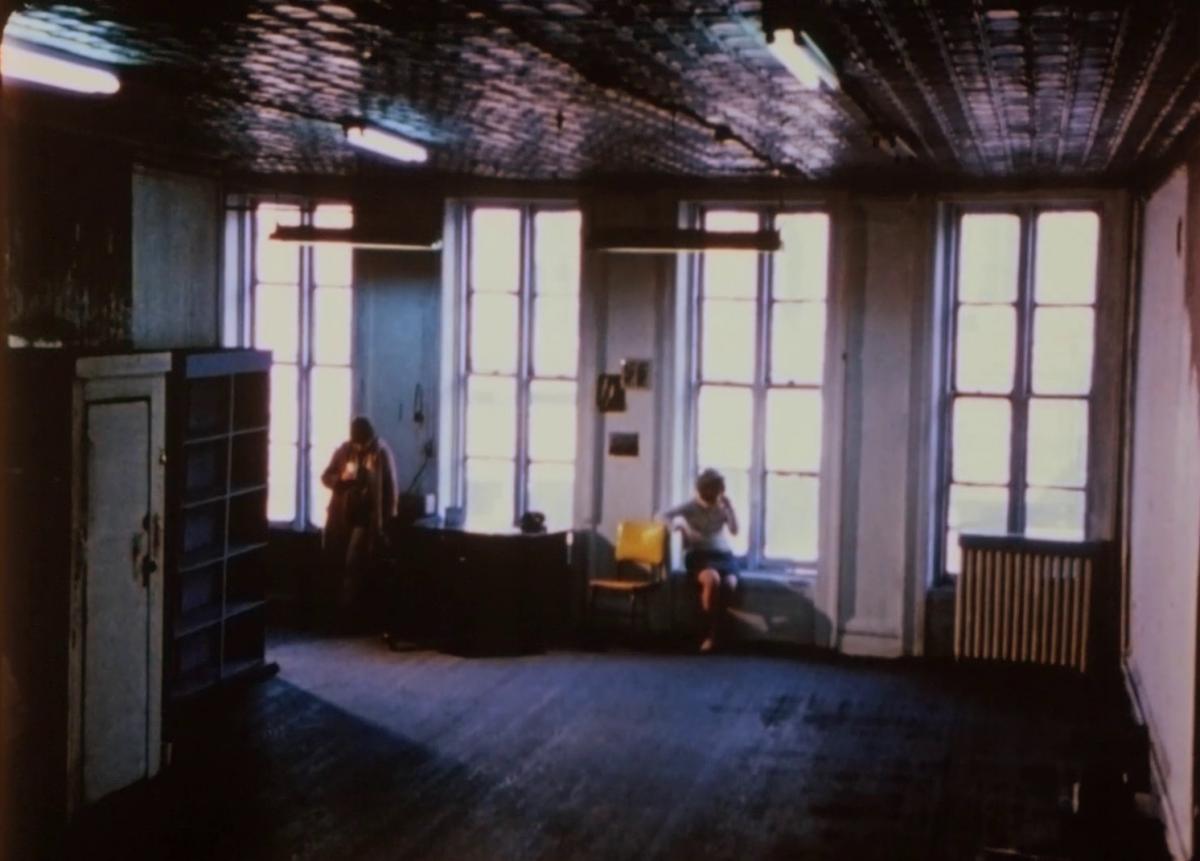Passage: Mónica Delgado

“When the electronic sound in Wavelength reaches an ear-cracking shriek, the one-shot movie, a 45-minute zoom aimed at four splendid window rectangles, burns hot white, like the filaments in a light bulb. This middle section is composed of violent changes of color in which the screen shudders from intensities of green, magenta, sienna: a virtuoso series of negative and positive impressions in which complementary colors are drained out so that the room, undergoing spasms, flickers from shrill brilliant green to pure red to a drunken gorgeous red-violet. Despite the grueling passage, which always comes three quarters through a four-part construction, his two major statement films, Wavelength and ←→ are liftingly intellectual.”1
Writing critical texts on experimental films is a difficult practice. On the one hand, it is about unlearning to see and reflect on cinema from a narrative point of view. On the other hand, it is about entering the field of abstraction, of the nebula, of the freedom of forms, from its artistic, philosophical, even esoteric implications.
I had been writing for years about characters, mise-en-scène, narrative structures, plot twists or MacGuffins when suddenly a group of friends and I had the idea of leaving behind writing about more conventional films that would probably have a hundred journalists and critics writing about them. And we opted, ten years ago, to start an online magazine where we could write about independent cinema and, above all, about experimental cinema. And there came the dilemma: What do you write about when you want to comment on experimental films?
When I read the American critic Manny Farber’s text about an indispensable experimental film, I noticed that there was something extraordinary. A way of adjectivizing that which seemed ungraspable after having seen it. It was not only a matter of translating an experience but of finding the exact material to transmit that which reverberates on the screen. On the one hand, Farber’s text on Michael Snow’s Wavelength (1967) calls important elements such as light, space, the dimensions of the windows, the presence of shadows, the irruption of colours all over the screen, etc., “actors” (perhaps like the actants of some semiotic methodology), as if in the film they assumed a role within some “narrative”: the task of carrying out an action, some activity that moves the story forward. Light, space and the density of the passage of time as performers.
And on the other hand, the text describes a kind of “carnality” in the way these aesthetic components are described: for Farber the screen in Wavelength shudders, the loft spasms, and the colours drain, thus providing the experience of the film with a force beyond its contours. As Farber indicates in a passage of this text “the stability of the inanimate that keeps life from flying away”. And in this apparent immobility of the objects, life appears, from its colours, shadows or lights, which are activated by the magic of a camera and its devices. Thus, I decided to take the writing path traced by Farber-Snow.
But there is something else, an element that is usually left out in the critical analysis of more conventional films: sound. An element that becomes mandatory in the analysis of experimental works, especially due to that conflicting connection between image, noises and silences, or as Paul Sharits stated: “Perhaps the most engaging problem of cinema is the relationship sound may have to visual image.”
For Farber, the noises or this electronic echo that expands with the zoom in in Wavelength is cathartic, synesthetic, it is a giver of meanings, and just as Snow conceived it, as an entrance, a portal, as a path in waves that is contracting, lying ever closer to the idea of the sea.
- 1Manny Farber, article published in Art Forum, January 1970.
Image from Wavelength (Michael Snow, 1967)
In its new section Passage, Sabzian invites film critics, authors, filmmakers and spectators to send a text or fragment on cinema that left a lasting impression.

